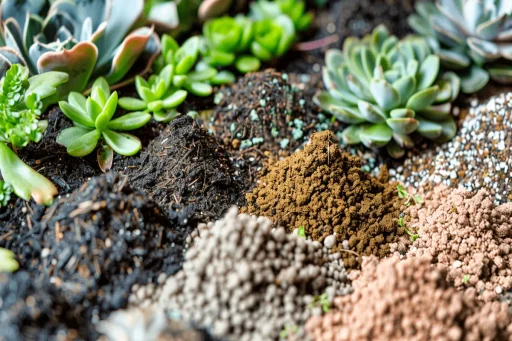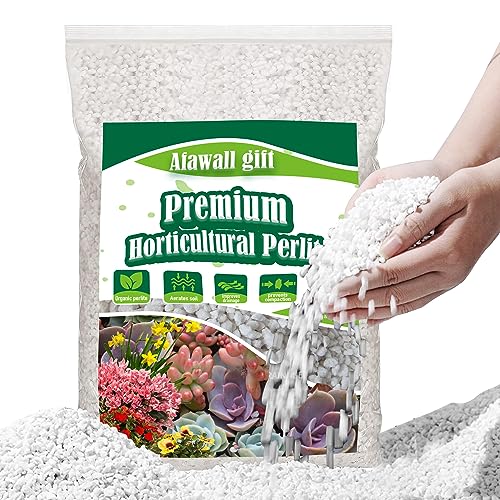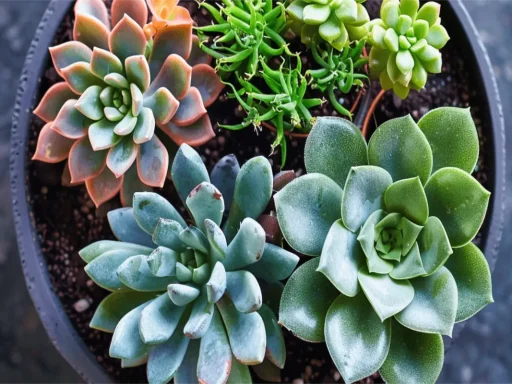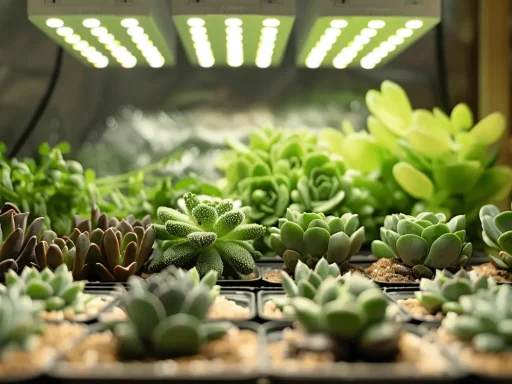Imagine your succulents basking in the perfect soil mix, their roots snug and thriving. But what if your current mix isn’t quite right?
Discover the key components and ratios that can make or break your succulent propagation success. Uncover the secrets to creating a soil mix that fosters healthy growth and prevents common pitfalls.
Your succulents deserve the best foundation for their journey to flourishing – are you ready to unlock the ultimate soil mix guide for your beloved plants?
Table of Contents
Organic Vs. Mineral Soil Components

When deciding on the composition of your succulent propagation soil mix, consider the benefits of organic versus mineral soil components.
Succulents thrive in well-draining soil to prevent waterlogged roots and potential rot issues. Organic soil components like pine bark and compost contribute to the soil’s structure and water-holding capacity, providing essential nutrients and aiding in water retention for your succulents.
On the other hand, mineral components such as perlite and coarse sand improve drainage by creating air pockets in the soil, allowing excess water to flow through and preventing root rot.
Balancing these organic and mineral components is key to creating an ideal environment for your succulents to grow and propagate successfully.
The organic materials enhance the soil’s ability to hold onto moisture and provide vital nutrients, while the mineral components ensure proper drainage, preventing water from stagnating around the roots. Finding the right ratio of organic to mineral components in your soil mix is crucial for promoting healthy succulent growth and propagation.
Importance of Texture and Porosity
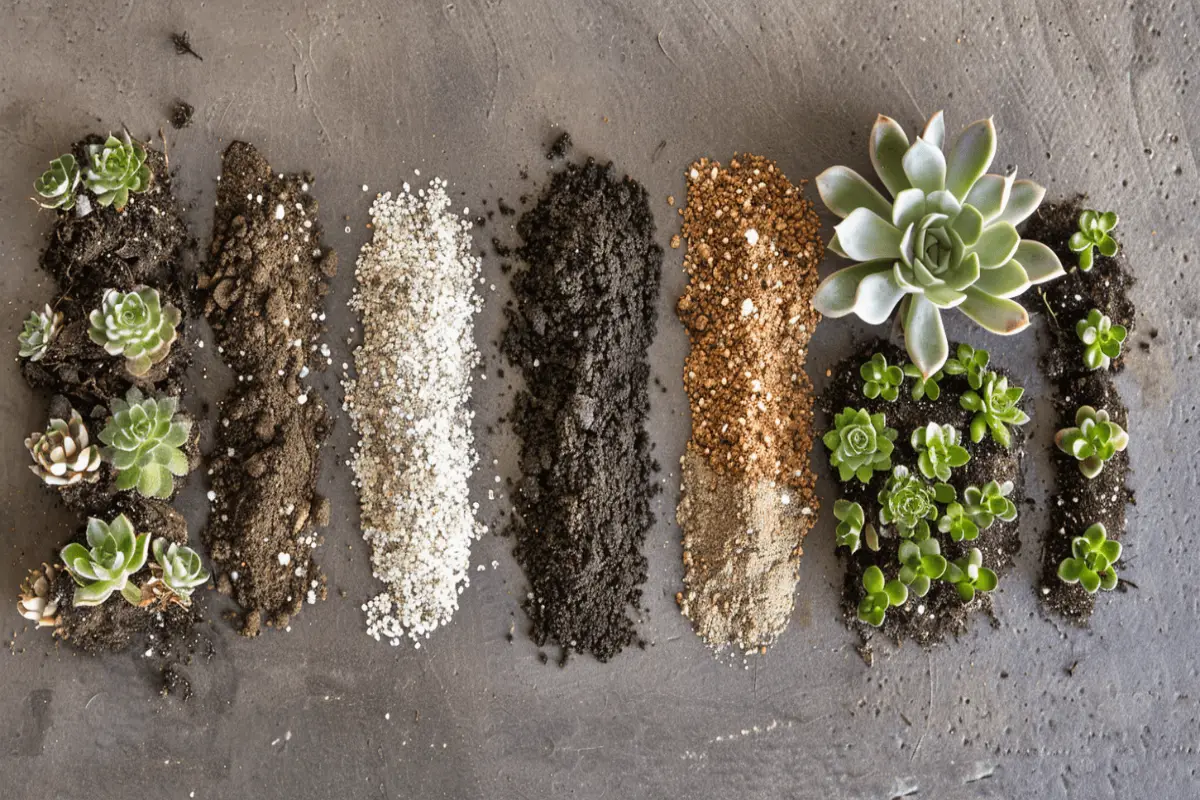
Having the right texture and porosity in your succulent propagation soil mix is vital. It allows roots to grow easily and prevents water from pooling around them.
Ensuring proper aeration and drainage will help your succulent cuttings thrive.
Soil Drainage Importance
Proper soil drainage plays a crucial role in safeguarding succulents against root rot and fungal infections, essential for their overall health and well-being. Here are some key points to consider:
- Sandy soils: Promote quick water drainage for succulent health.
- Porosity: Allows for air circulation around the roots, preventing suffocation and promoting growth.
- Optimal moisture levels: Well-draining soil with good porosity helps maintain these levels, preventing waterlogging.
- Balanced soil: Ensures that excess water can easily escape, maintaining a healthy environment for succulents.
Texture for Rooting
To promote successful succulent propagation, prioritize the texture of the soil mix for optimal root development and growth. Choosing a porous soil mix is essential as it facilitates water retention, oxygenation, and overall root health.
Optimal porosity in the soil mix allows roots to penetrate easily, aiding in the establishment of a strong foundation for the succulent plants. Additionally, a well-draining soil mix ensures that excess water can effectively drain away, reducing the risk of root rot.
Reviews on Recommended Soil Mixes
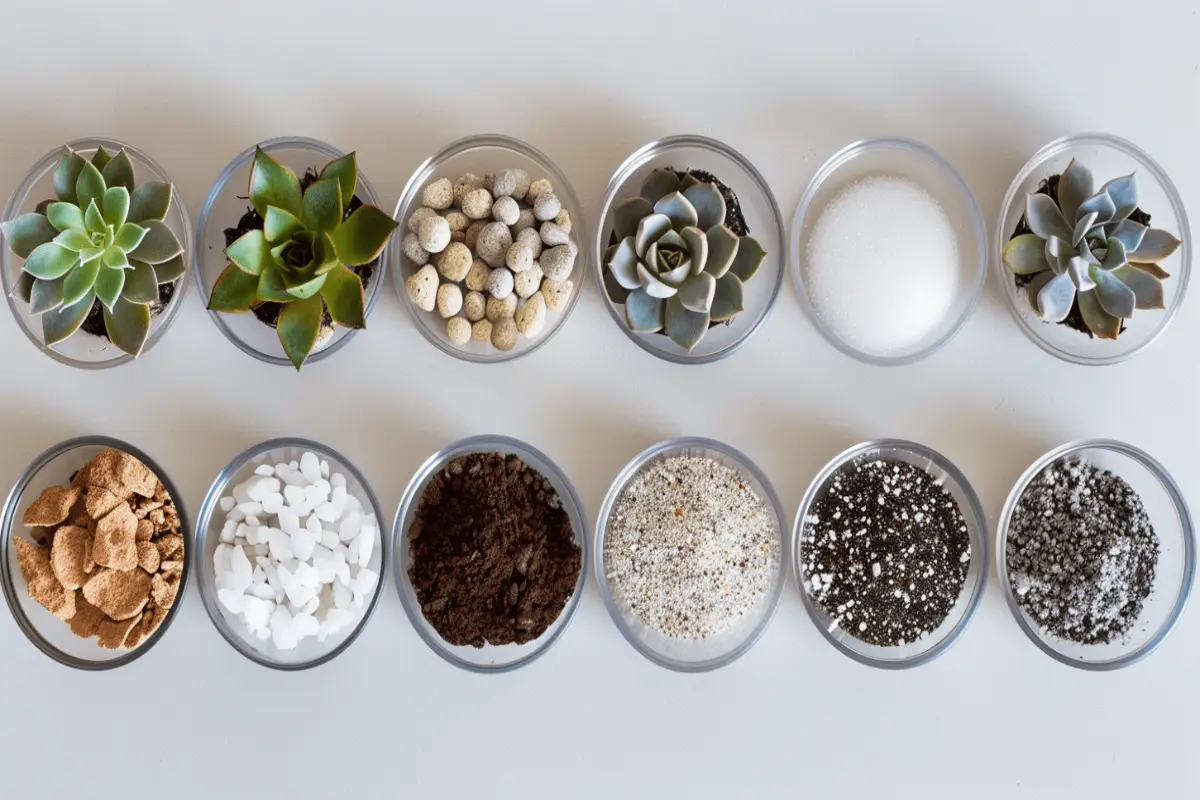
You’ll find valuable insights on soil mix ingredients, the benefits they offer to your succulents, and practical application tips in the reviews coming up.
These points will help you make informed decisions about the soil mixes that will best support your succulent propagation efforts.
Understanding these aspects will pave the way for successful and healthy succulent growth.
Soil Mix Ingredients
Enhancing succulent growth and preventing issues like root rot often begins with selecting the right soil mix. Highly recommended options include Black Gold Cactus Mix, Miracle-Gro Cactus, Palm & Citrus Mix, and Bonsai Jack Succulent & Cactus Soil.
These soil mixes are known for their excellent drainage, balanced formulas, fast-draining properties, and optimal aeration. They provide the ideal environment for succulents to thrive.
If you enjoy a hands-on approach, DIY succulent soil mixing can be a cost-effective alternative that allows for customization based on your succulent’s specific needs. Choosing the best soil for succulents is crucial for their overall health and longevity.
Sun Gro Horticulture 8-Quart Black Gold 1310102 Purpose Potting Soil With Control, Brown/A
Benefits of Mix
For successful succulent propagation, choosing the right soil mix is paramount to ensure optimal root development and overall plant health. Commercial soil mixes like Bonsai Jack Succulent & Cactus Soil come highly recommended for their effectiveness in promoting successful propagation. These commercial soil mixes offer good soil composition, providing the necessary drainage and aeration required for new succulent growth.
Reviews of soil mixes such as Miracle-Gro Cactus, Palm & Citrus Mix also emphasize their benefits in succulent propagation. It’s essential to select a soil mix that promotes good drainage to prevent root rot and ensure the best conditions for your succulents to thrive during propagation.
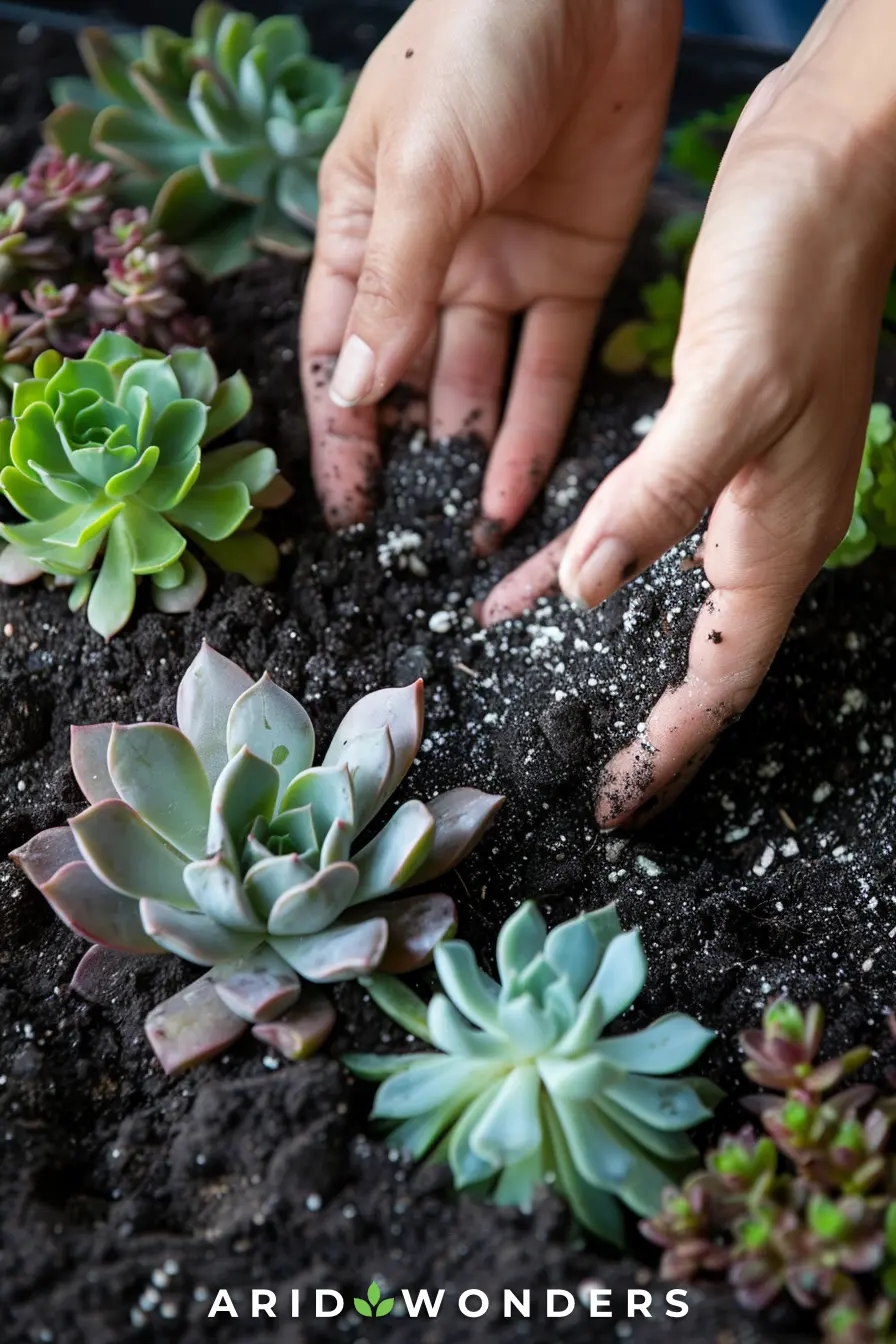
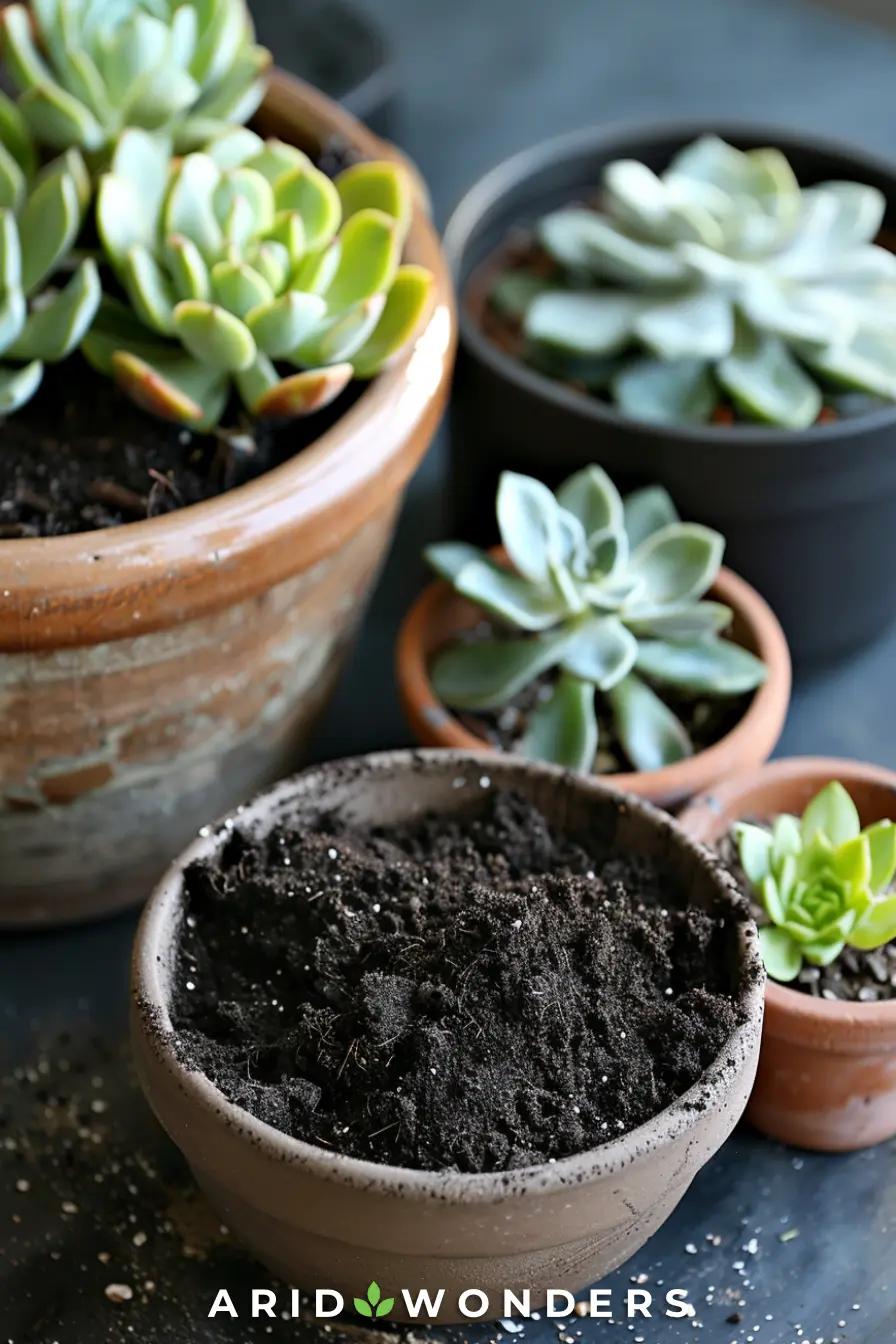
Application Tips
When applying recommended soil mixes for succulent propagation, consider the specific needs of your plants to ensure successful growth and development. Here are some application tips to help you make the most of your succulent soil mix:
- Ensure Proper Drainage: Whether using a commercial succulent soil mix or a DIY blend, good drainage is key to prevent waterlogged roots.
- Monitor Moisture Levels: Succulents prefer drier conditions, so avoid overwatering to prevent root rot and other issues.
- Provide Adequate Sunlight: Place your succulents in a location where they can receive the right amount of sunlight for healthy growth.
- Repot When Necessary: As your succulents grow, consider repotting them with fresh soil mix to provide ample nutrients for continued development.
DIY Succulent Soil Recipe Ingredients
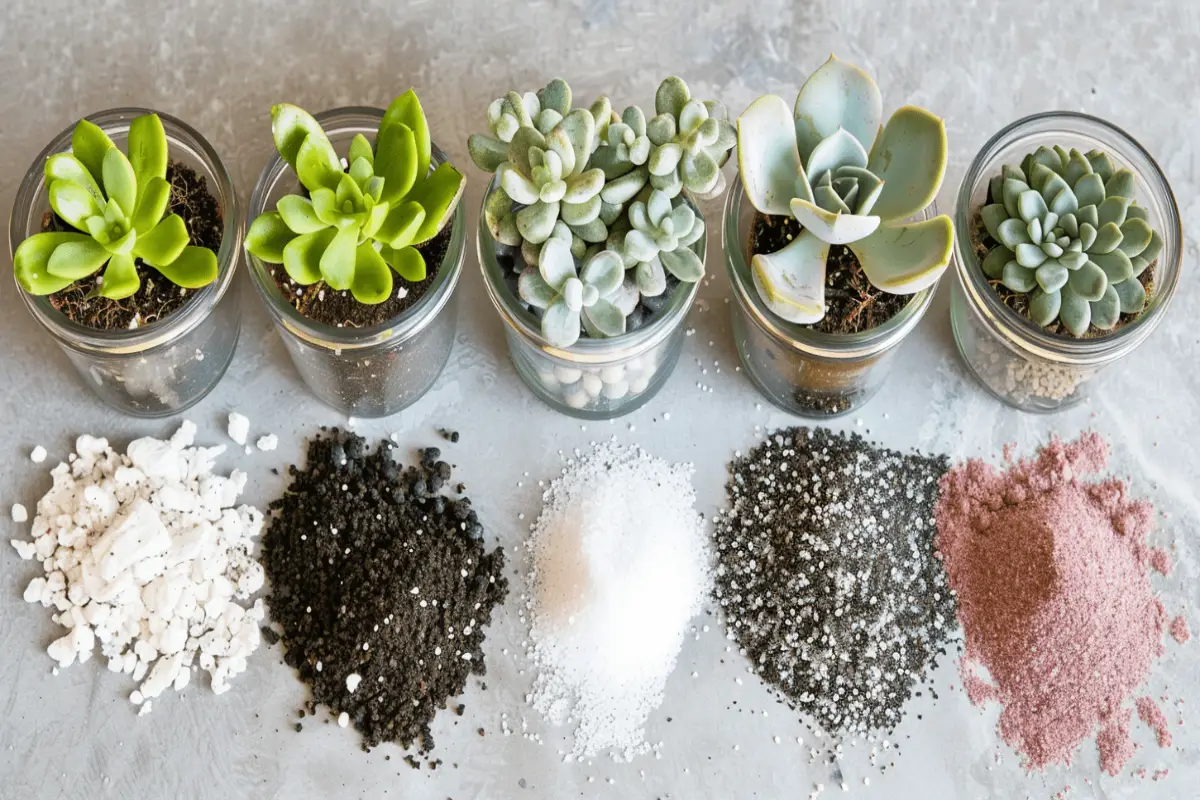
To create a DIY succulent soil mix, combine equal parts potting soil, coarse sand, and perlite for optimal drainage and aeration. Potting soil mix provides essential organic matter for nutrients, while coarse sand aids in drainage, preventing waterlogged conditions that can harm succulents.
Perlite, a volcanic mineral, is crucial in preventing soil compaction and improving the overall structure of the mix. This combination ensures a well-balanced environment for healthy root growth.
DIY succulent soil recipes aren’t only cost-effective but also customizable to suit the specific needs of your succulents. By incorporating these key ingredients in equal parts, you create a tailored mix that promotes the ideal conditions for your succulents to thrive. This DIY approach allows you to control the quality of the soil, ensuring that your succulents receive the best possible care.
2QT Perlite for Plants Organic Perlite Horticultural Soil Amendment for Indoor & Outdoor Container Plants and Enhanced Drainage Enhanced Growth.Promote Root Growth and Soil Health
Creating the Ideal Potting Mix
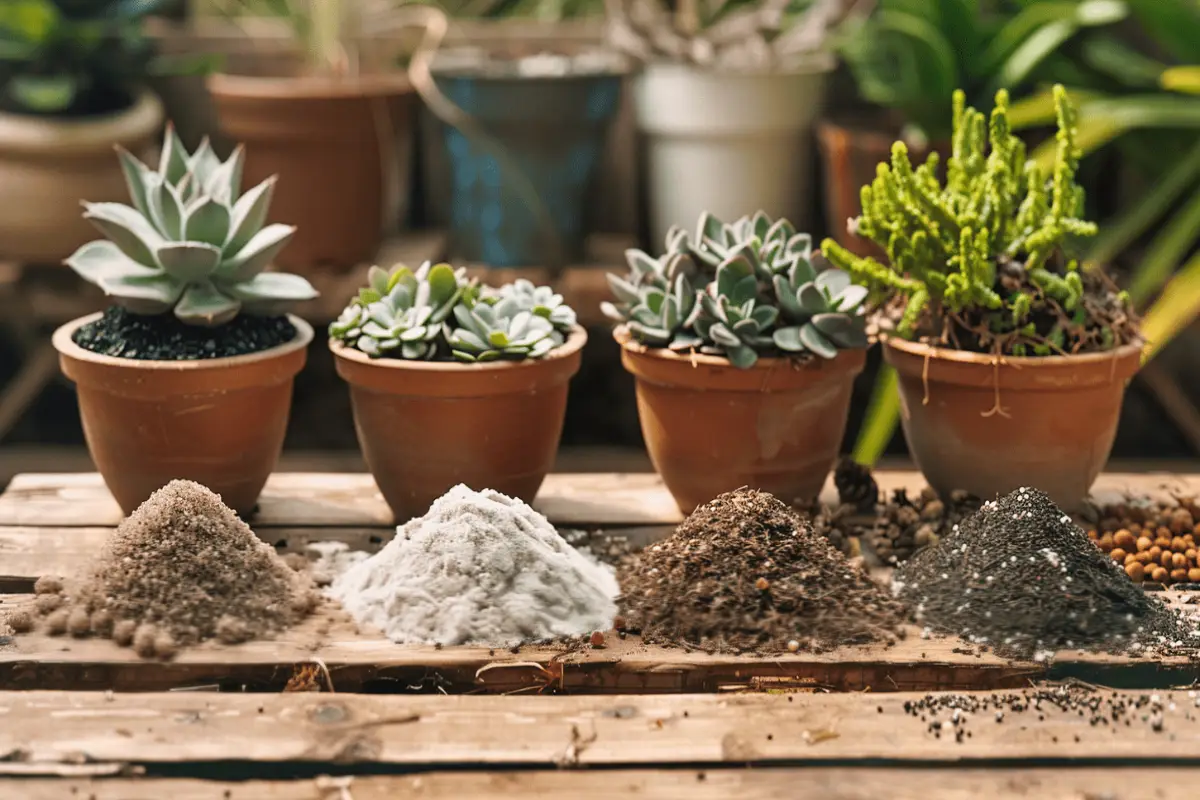
Achieve optimal succulent growth by preparing a well-draining and nutrient-rich potting mix for successful propagation. When creating the ideal potting mix for your succulents, consider the following:
- Drainage is Key: Ensure your potting mix has excellent drainage to prevent waterlogging, which can lead to root rot in succulents.
- Organic Matter Matters: Incorporate organic matter into the mix to provide essential nutrients and promote healthy root development for your succulents.
- Balanced Components: Use a balanced mix of perlite or pumice, sand, and organic matter in equal parts to create a porous and supportive environment for successful succulent propagation.
- Proper Mixing Technique: Thoroughly mix the ingredients to ensure uniform distribution, which will help in maintaining optimal conditions for your succulents to thrive.
Outdoor Soil Considerations for Landscaping

For successful landscaping with succulents, outdoor soil considerations play a crucial role in promoting healthy growth and preventing issues such as waterlogging and poor drainage. When planting outdoor succulents, ensure the soil mix is well-draining to prevent water from pooling around the roots.
Mounding soil around your outdoor succulents can help improve drainage and enhance aeration, creating an optimal environment for these plants to thrive. Unlike indoor plants, outdoor succulents are more tolerant of different soil conditions, but they still require sufficient drainage to prevent root rot.
Heavy clay soils commonly found in outdoor settings can present challenges for succulent cultivation due to their poor drainage properties. Therefore, selecting the right outdoor soil mix is essential for successful landscaping with succulents.
Prioritize the health of your plants by choosing a well-draining soil mix that allows excess water to flow through easily, promoting robust growth and vibrant foliage.
Peat Moss Vs. Coconut Coir Debate
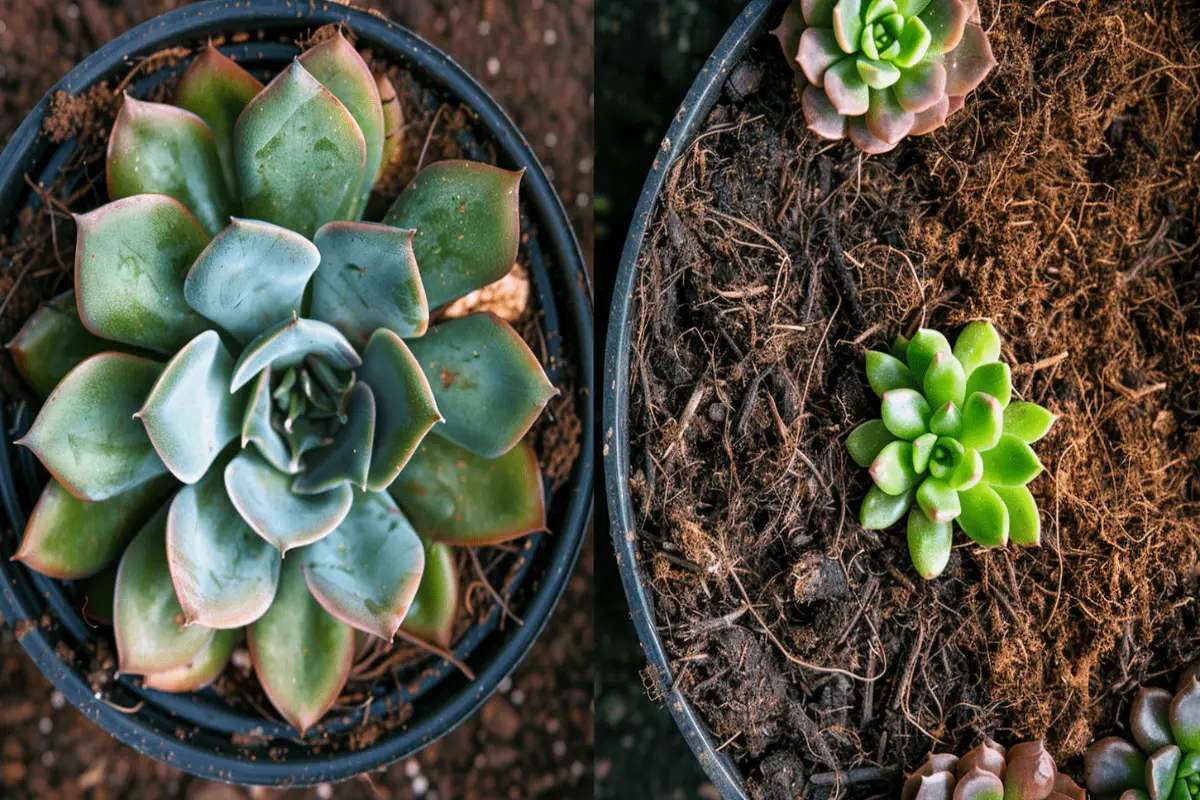
When deciding between peat moss and coconut coir for your succulent propagation soil mix, consider their unique properties and environmental impact. Both coconut coir and peat moss have their advantages, but for succulent propagation, coconut coir might be the better choice. Here’s why:
- Water Retention: Peat moss has high water retention properties, which can be a challenge for succulents that prefer well-draining soil. On the other hand, coconut coir provides good drainage, preventing waterlogged conditions.
- pH Levels: Coconut coir is pH neutral, suitable for a wider range of plants, including succulents, while peat moss tends to be acidic, which may not be ideal for all succulent varieties.
- Environmental Impact: Coconut coir is a renewable resource, making it more environmentally friendly compared to peat moss, which is harvested from non-renewable peat bogs.
- Rehydration: Coconut coir requires less water to rehydrate than peat moss, making it a more efficient and sustainable choice for succulent propagation mixes.
Sustainability and Coir Usage in Soil
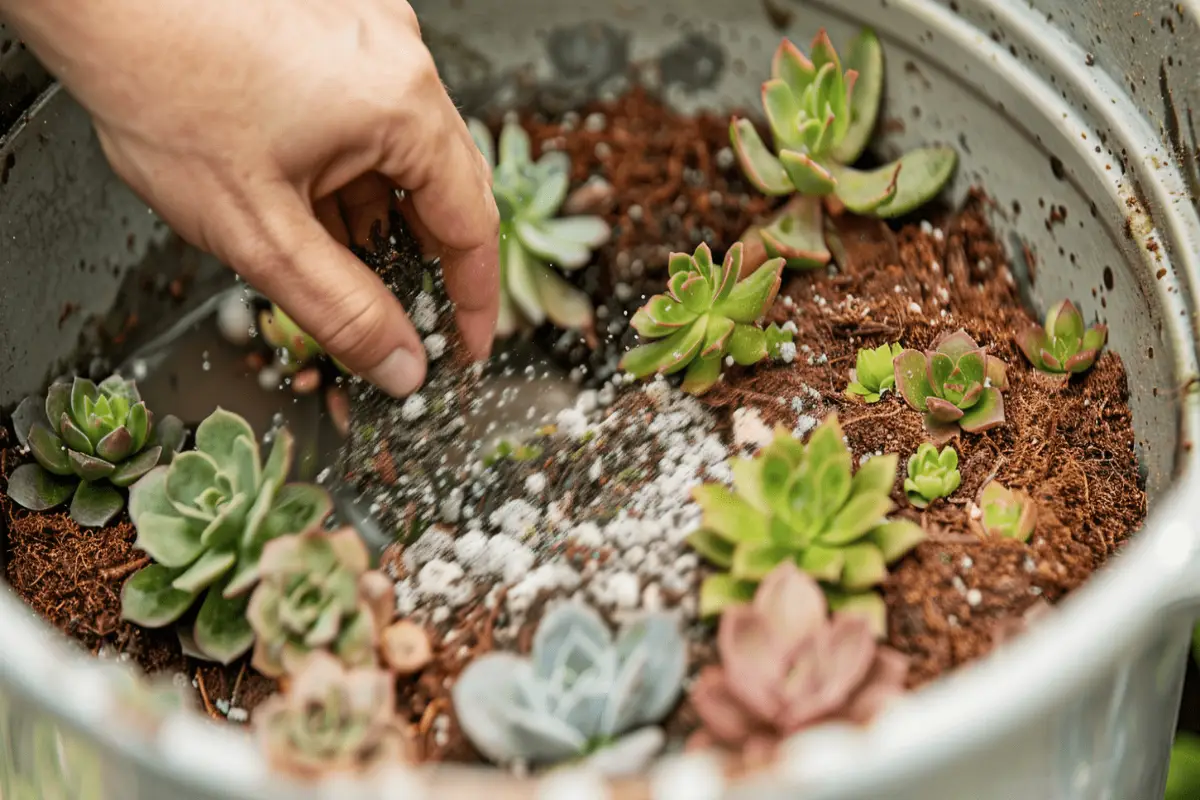
Considering the sustainability of coir and its advantageous usage in succulent soil mixes, you’ll find that this renewable and eco-friendly alternative offers various benefits for your gardening practices.
Coir, derived from coconut husks, serves as a sustainable option compared to peat moss in succulent soil blends. Its renewable and biodegradable nature aligns with eco-conscious gardening, making it an environmentally friendly choice.
The moisture retention properties of coir aid in fostering healthy root development while decreasing the necessity for frequent watering. Additionally, its fibrous texture enhances soil aeration and drainage, improving the overall structure ideal for succulents.
Coir’s pH neutrality and resistance to compaction make it a versatile component in succulent propagation soil mixes, contributing to plant health and growth.
Embracing coir in your succulent soil mix not only benefits your plants but also supports sustainable gardening practices.
Back to the Roots Organic Potting Soil 10lb Coco Coir Expands to 15 Gallons (2 cu ft / 51.4qt) All Purpose pH Balanced Brick for Indoor Growing, Seed Starting
Frequently Asked Questions
What Is the Best Soil for Succulent Mix?
For your succulent mix, choose well-draining soil with a balance of organic and inorganic elements. Opt for a sandy, porous mix that prevents water buildup. This mix helps your succulents thrive by avoiding root rot and maintaining their health.
Can You Put Succulent Cuttings Straight Into Soil?
Yes, you can put succulent cuttings straight into well-draining soil. It enhances successful propagation by promoting healthy root development, reducing transplant shock, and supporting quicker establishment. Avoid overwatering to prevent rot and waterlogged conditions.
What Is the Mix Ratio for Well Draining Soil?
For well-draining succulent soil, aim for a 1:1:1 mix of organic matter, porous materials like perlite, and fast-draining sand. This combo ensures proper drainage, aeration, and moisture balance, crucial for healthy succulents.
Do Succulents Like Coffee Grounds?
Yes, succulents like coffee grounds because they add organic matter, improve soil structure, and attract earthworms. Use them in moderation to prevent pH imbalance. Mixing with other organics creates a balanced soil mix for your succulents.
